5g Viewer

How will 5G change the entertainment industry ?
The advent of 5G technology is set to revolutionize various sectors, including the entertainment industry. With its faster speeds, lower latency, and increased connectivity, 5G promises to transform how content is created, distributed, and consumed. In this article, we will explore the potential changes that 5G can bring to the entertainment industry. One of the most significant changes that 5G will bring to the entertainment industry is an enhanced streaming experience. With 5G's faster download and upload speeds, users can enjoy high-quality video and audio content without buffering or lag issues. This means that viewers can watch their favorite movies, TV shows, or live events in real-time, with no interruptions. Moreover, 5G's low latency ensures that there are minimal delays between the broadcaster and the viewer, making it ideal for live streaming events such as sports games or concerts. Another area where 5G can have a profound impact is in virtual reality (VR) and augmented reality (AR) experiences. These technologies require high bandwidth and low latency to function effectively, which makes them perfect candidates for 5G networks. With 5G's capabilities, VR and AR experiences can become more immersive and realistic than ever before. For example, users could attend virtual concerts or sporting events from the comfort of their homes, feeling as if they were actually there. Additionally, AR applications could be used to enhance traditional media by adding interactive elements to books, magazines, or even billboards. Cloud gaming is another area where 5G can make a significant difference. With 5G's fast speeds and low latency, gamers can play high-quality games without needing powerful hardware devices. Instead, they can stream games directly from the cloud, using their smartphones, tablets, or even smart TVs as controllers. This means that gamers no longer need expensive consoles or PCs to enjoy their favorite games; they only need a stable internet connection and a compatible device. Moreover, cloud gaming opens up new opportunities for developers to create more complex and immersive games without worrying about hardware limitations. Finally, 5G can also enable more interactive content creation and consumption. With 5G's increased connectivity and faster speeds, creators can produce interactive videos, podcasts, or other forms of media that allow viewers to engage with the content in real-time. For example, viewers could participate in polls or quizzes during live shows or interact with characters in a movie through AR features on their devices. This level of interactivity not only enhances the viewing experience but also creates new opportunities for advertisers looking to reach engaged audiences.

How can I increase viewer interaction in my online broadcasts ?
Increasing viewer interaction is crucial for online broadcasters to build a loyal fan base and improve engagement. Strategies include engaging with the audience through live chat, polls, and Q&A sessions; incorporating interactive games, collaborations, and guest appearances; using visually appealing graphics and custom overlays; building a community through fan groups and contests; and encouraging viewer participation by showcasing their content.

How important is viewer interaction to the success of a live stream ?
The importance of viewer interaction in live stream success cannot be overstated. It not only enhances the viewer's experience but also helps build a strong community around the content. Engaging content, building community, and measuring success are all crucial aspects of viewer interaction that can help ensure the success of a live stream. By providing engaging content, interacting with viewers, collaborating with other creators, and tracking key metrics, you can create a loyal fan base that will support your live streams and help promote your content to others.

What challenges need to be overcome for widespread adoption of 5G ?
The widespread adoption of 5G technology faces several challenges that need to be addressed before it can become a ubiquitous part of our lives, including high costs, regulatory approvals, technical hurdles, public perception, network compatibility and interoperability, training and education, market competition, and environmental impact. Overcoming these challenges requires collaborative efforts from industry leaders, governments, researchers, and consumers alike. By addressing these issues head-on, we can pave the way for a future where 5G technology truly transforms how we live, work, and connect with each other.

How can I effectively respond to viewer comments and questions in real-time during a live broadcast ?
Effective Real-time Response to Viewer Comments and Questions During a Live Broadcast Live broadcasting has become an increasingly popular way for content creators to connect with their audience. However, responding to viewer comments and questions in real-time can be challenging. This guide will provide tips on how to effectively respond to your viewers during a live broadcast. Tips for Responding to Viewer Comments and Questions: 1. Stay Calm and Professional 2. Acknowledge and Address Viewer Comments 3. Use Short and Clear Replies 4. Encourage Further Engagement 5. Leverage Moderation Tools By following these tips, you can effectively engage with your audience and create a positive viewing experience. Remember to stay calm, acknowledge and address concerns, use short and clear replies, encourage further engagement, and leverage moderation tools as needed.

What is the difference between 2G, 3G, 4G, and 5G communication base stations ?
The progression from 2G to 5G in wireless communication technologies represents a monumental leap in terms of speed, capacity, latency, and the range of services that can be delivered. Each generation brings its own set of improvements and capabilities, shaping the way we communicate and use technology. Here's a detailed breakdown of the differences between 2G, 3G, 4G, and 5G base stations.

Will 5G replace wired broadband connections ?
This article discusses the potential of 5G technology to replace wired broadband connections. It highlights the key features of 5G, including higher speeds, lower latency, and greater capacity. The article also emphasizes the advantages of wired broadband connections, such as reliability, consistent speeds, and security. While 5G has its pros, such as mobility, scalability, and cost-effectiveness, it also has its cons, including coverage issues, limited range, and infrastructure costs. The article concludes that while 5G has the potential to revolutionize wireless connectivity, it is unlikely to completely replace wired broadband connections in the near future.
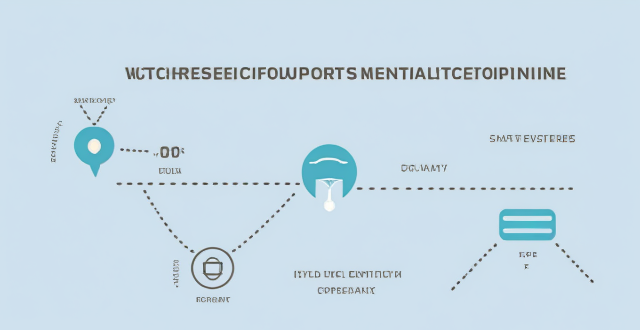
Can existing devices support 5G network ?
This article discusses whether existing devices can support 5G network and what factors influence this compatibility. The most important factor determining whether a device can support 5G is its hardware, including the modem, antenna, and other components required for 5G connectivity. Another factor that can affect compatibility is the software on your device, such as an outdated operating system or lack of necessary drivers and firmware updates. Finally, even if your device has the necessary hardware and software, you still need to have a carrier that supports 5G in your area. To check if your device is compatible with 5G, you can check your device's specifications, ensure that it is running the latest operating system and has all necessary drivers and firmware updates installed, contact your carrier to see if they offer 5G service in your area and if your plan includes access to this network, and consult with a professional or contact the manufacturer for assistance.

What is 5G network and how does it work ?
The 5G network is the fifth generation of mobile networks, offering significant improvements in speed, capacity, and responsiveness over its predecessor, 4G. It utilizes higher frequencies, advanced antenna technology, and reduced latency to provide enhanced mobile broadband, lower latency, increased reliability, massive IoT connectivity, and improved energy efficiency. The rollout of 5G worldwide is expected to enable new applications and services that were not possible with previous network technologies.
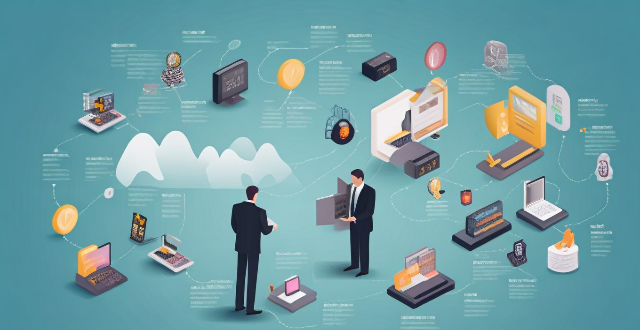
What impact has 5G technology had on the telecommunications industry ?
The advent of 5G technology has revolutionized the telecommunications industry, offering faster speeds, lower latency, and increased capacity. Key impacts include enhanced mobile broadband, ultra-reliable low-latency communications, and massive Internet of Things connectivity. These advancements have led to changes in network infrastructure, service innovation, economic growth, and social development. However, challenges such as coverage limitations, compatibility issues, spectrum allocation, and security concerns need to be addressed. The full potential of 5G is yet to be realized but holds immense promise for positive change across various sectors.

What new possibilities does 5G open up for businesses ?
The advent of 5G technology has ushered in a new era of possibilities for businesses across various industries, offering faster speeds, lower latency, and increased capacity. This topic explores the key opportunities that 5G presents to companies, including enhanced connectivity and real-time data access, expansion of the Internet of Things (IoT), applications of Augmented Reality (AR) and Virtual Reality (VR), improved customer experience, automation and efficiency, and edge computing. With these advancements, businesses can streamline operations, increase efficiency, and drive innovation.

Is 5G network more secure than 4G ?
The question of whether 5G is more secure than 4G has been a topic of discussion among tech enthusiasts and security experts. While it's true that 5G brings many improvements over its predecessor, including faster speeds and lower latency, the question of security is complex and multifaceted. Let's dive into some key aspects to consider: ## Encryption and Authentication ### Key Points: - **Stronger Encryption**: 5G uses more advanced encryption methods compared to 4G. - **Enhanced Authentication Procedures**: 5G introduces new authentication mechanisms. #### Explanation: 5G networks employ stronger encryption standards than 4G. For instance, it uses algorithms like AES-256 for confidentiality, which is considered very secure. Moreover, 5G includes enhanced authentication procedures such as network function protection and improved identity privacy features. These enhancements make it harder for attackers to intercept or spoof user data. ## Network Slicing and Isolation ### Key Points: - **Network Slicing**: Allows multiple virtual networks on a shared physical infrastructure. - **Improved Isolation**: Helps in containing potential security breaches. #### Explanation: One of the innovative features of 5G is network slicing, which enables operators to create multiple virtual networks tailored for different services or customers. This can improve security by isolating sensitive communications from general traffic, reducing the risk of cross-contamination if one slice gets compromised. ## IoT and Device Density ### Key Points: - **Increased Connectivity**: 5G is designed to support a much higher number of devices. - **Potential Vulnerabilities**: More connected devices could mean more entry points for attacks. #### Explanation: With the rise of IoT (Internet of Things), 5G is expected to connect many more devices than 4G. While this opens up opportunities for smart cities, autonomous vehicles, etc., it also increases the potential attack surface. Each device could be a vulnerability that hackers might exploit. ## Security Standards and Regulations ### Key Points: - **Evolving Standards**: 5G security standards are still evolving. - **International Cooperation**: Global cooperation is essential for setting uniform security regulations. #### Explanation: As with any new technology, the security standards for 5G are still being developed and refined. There's an ongoing effort from international bodies to ensure that 5G networks worldwide adhere to stringent security guidelines. However, the effectiveness of these measures will depend on how consistently they are implemented and enforced across different countries and providers. ## Conclusion In conclusion, while 5G brings several improvements that can enhance security—such as stronger encryption and better authentication mechanisms—it also introduces new challenges due to increased connectivity and the need for global cooperation on security standards. Therefore, it's not straightforward to declare that 5G is inherently more secure than 4G without considering various factors and ongoing developments in both technologies.

When will 5G networks be available globally ?
The availability of 5G networks globally depends on technological development, regulatory frameworks, and infrastructure deployment. Technological advancements such as millimeter-wave spectrum and advanced antenna designs have paved the way for faster data speeds and higher capacity in wireless networks. Regulatory frameworks are crucial in determining the availability of 5G networks globally, as governments need to establish policies and standards that support its deployment while ensuring consumer safety. Infrastructure deployment is another critical factor, as building out the necessary network infrastructure requires significant investment and planning. Despite these challenges, several trends suggest that 5G networks will become more widely available over the next few years, including rapid adoption, increasing investment, and government support.

How does 5G affect battery life in smartphones ?
With the advent of 5G technology, concerns have arisen about its impact on smartphone battery life. In this article, we explore how 5G affects battery life and provide strategies for conserving battery while still enjoying the benefits of 5G speeds. First, we define 5G as the fifth-generation wireless technology that promises faster data transfer speeds, lower latency, and greater connectivity than its predecessor, 4G LTE. However, the higher frequency bands used by 5G require more energy to transmit and receive signals compared to 4G. Additionally, the increased number of small cell sites needed for 5G coverage also requires more power to operate. Second, we discuss how 5G can affect battery life through increased data consumption and higher power consumption. With faster speeds and improved connectivity, users are likely to use their devices more frequently and for longer periods of time, leading to a drain on the battery. Furthermore, network management issues may cause unnecessary strain on the battery. Third, we provide strategies for conserving battery life when using a 5G network. These include turning off unnecessary features, using low power mode, optimizing screen settings, and updating your device regularly. By implementing these strategies, you can help extend your device's battery life while still being able to take advantage of 5G speeds.

What are the benefits of using a 5G network ?
The advent of the 5G network has brought about significant changes in the way we use technology. It offers several benefits that were not possible with earlier networks. Here are some of the key advantages: 1. **Faster Speeds**: Compared to 4G, 5G can provide download and upload speeds that are up to 10 times faster. 2. **Lower Latency**: With 5G, the delay is reduced significantly, making real-time communication more efficient. 3. **Increased Capacity**: 5G networks can handle more devices and connections at the same time. 4. **Improved Reliability**: They use advanced signal processing techniques to ensure stable connections. 5. **New Use Cases**: 5G opens up opportunities for new applications like virtual reality and smart cities.

How fast is the 5G network compared to 4G ?
The fifth generation of wireless systems (5G) is significantly faster than the fourth generation (4G). The speeds achievable with 5G can vary depending on several factors, including network congestion, device capabilities, and the specific technology implementation. However, here are some general comparisons to give you an idea of the differences: - Download Speeds: Typical download speeds for 4G can range from 10 to 50 Mbps (Megabits per second), while with 5G, download speeds can start around 100 Mbps and can go up to multiple Gbps (Gigabits per second), with peak theoretical speeds reaching as high as 20 Gbps. - Latency: Latency in 4G networks typically falls between 30 to 50 milliseconds, while one of the major improvements with 5G is its reduced latency, which can be as low as 1 millisecond. - Bandwidth and Capacity: While 4G offers sufficient bandwidth for many current applications, it can struggle under heavy loads or during high-traffic events, while 5G is designed to handle much higher capacity and density of connections, making it better suited for crowded areas and large-scale deployments. With faster speeds and lower latency, streaming services can offer higher resolutions with less buffering, meaning smoother playback for 4K and even 8K video content. 5G's low latency makes it ideal for Augmented Reality (AR) and Virtual Reality (VR) experiences that require real-time interactions without delays. 5G can connect many more devices simultaneously than 4G, facilitating the growth of smart cities, autonomous vehicles, and other IoT applications. Improved network reliability and coverage mean fewer dropped calls and better performance in rural or remote areas. In summary, while 4G has been a transformative technology that has enabled mobile internet access on a large scale, 5G promises to take connectivity to the next level with speeds that are potentially dozens of times faster and latency that is nearly imperceptible. These advancements open up new possibilities for various industries and technologies that were not feasible with 4G.
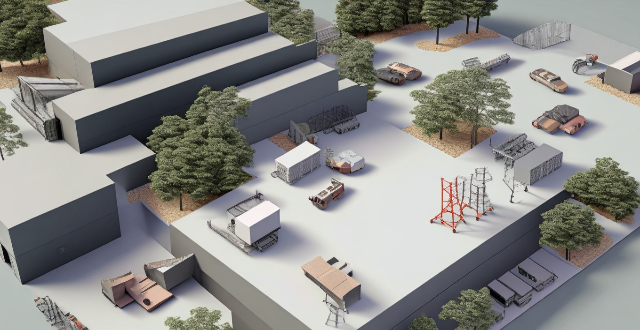
How much does it cost to upgrade to 5G network ?
The cost of upgrading to a 5G network varies depending on several factors, including your current plan, the carrier you are using, and the device you have. If you want to take advantage of 5G speeds, you will need a 5G-compatible device which can range from $200 to over $1000. The cost of upgrading to a 5G plan also depends on your carrier, with some offering unlimited data plans starting at around $70 per month. In addition to a new device and plan, you may also need to purchase accessories such as cases or screen protectors that are compatible with your new device. Finally, if you are installing a 5G network in your home or office, there may be additional costs associated with installation fees or equipment rental fees.

What impact will 5G have on the Internet of Things (IoT) ?
The emergence of 5G technology is poised to revolutionize the Internet of Things (IoT) landscape by offering significant improvements in speed, latency, connectivity, scalability, security, and privacy. These advancements will not only enhance existing IoT applications but also pave the way for new use cases such as autonomous vehicles, smart cities, and industrial automation. The increased data transmission speeds and lower latency of 5G networks enable faster and more efficient communication between IoT devices, leading to improved performance and reduced downtime. Moreover, the increased connectivity and scalability of 5G networks allow for the connection of a larger number of devices without degrading performance, which is crucial for industries like smart cities and industrial automation. Additionally, 5G's enhanced security features and better privacy protection address critical concerns related to IoT devices. Overall, the advent of 5G technology is expected to transform the IoT landscape by enabling new applications and improving the performance and reliability of existing ones.

Can rural areas benefit from 5G network deployment ?
The advent of 5G technology promises to revolutionize the way we live, work, and communicate. With its faster speeds, lower latency, and increased capacity, 5G has the potential to transform various sectors, including healthcare, education, transportation, and more. However, the question remains: can rural areas also benefit from 5G network deployment? Benefits of 5G in Rural Areas: - Improved Connectivity: Faster Internet Speeds and Reduced Latency - Enhanced Quality of Service: Better Coverage and Increased Capacity - Economic Development: Job Creation and Business Opportunities - Social Benefits: Education and Healthcare Challenges and Considerations: - Infrastructure Costs: High Initial Investment and Maintenance Expenses - Geographic Barriers: Topography and Population Density - Regulatory Hurdles: Spectrum Allocation and Compatibility Issues Conclusion: While there are certainly challenges associated with deploying 5G networks in rural areas, the potential benefits are significant. Improved connectivity, enhanced quality of service, economic development, and social benefits all stand to gain from the introduction of 5G technology. As long as these challenges are addressed through careful planning, collaboration between stakeholders, and appropriate investment, rural areas can indeed benefit from 5G network deployment.

What are some creative ways to involve my audience in live streaming content ?
Engaging Your Audience in Live Streaming Content Live streaming is a popular way for content creators to connect with audiences. Engaging viewers in real-time enhances the viewing experience and fosters community around your content. Here are some creative ways to engage your audience during live streams: 1. Interactive Polling and Quizzes Integrate polling tools like Slido or Mentimeter into your live stream to get immediate feedback from viewers. Ask questions related to the content you're streaming, allowing viewers to participate actively. Organize quizzes where viewers can answer questions related to your topic. Reward correct answers with shout-outs, digital badges, or small prizes to encourage participation. 2. Live Q&A Sessions Set aside time during your live stream for Q&A sessions where viewers can submit questions. Answer viewer questions on the spot, making them feel heard and valued. Promote a Q&A session ahead of time, allowing viewers to submit questions beforehand. Address pre-submitted questions during the stream, ensuring a steady flow of engagement. 3. Co-Streaming and Guest Appearances Invite guests to join your live stream, adding fresh perspectives and attracting a wider audience. Co-stream with other creators, cross-promoting each other's channels and expanding your reach. Feature viewer comments or reactions on screen, giving them a chance to be part of the stream visually. Incorporate viewer suggestions into the stream if possible, showing that their input is valued. 4. Interactive Games and Challenges Host games that viewers can play along with you, such as trivia or word association games. Create challenges specific to your content niche, encouraging viewers to engage creatively. Offer rewards for active participation, like exclusive access to content or personal shout-outs. Implement a point system where viewers earn points for interactions, which can be redeemed for perks. 5. Social Media Integration Use social media hashtags to create buzz around your live stream and encourage interaction outside the platform. Promote viewer posts on your story or feed, giving them more visibility and encouraging others to engage. Share behind-the-scenes clips on social media, giving viewers a sneak peek of what's coming up. Post live updates during the stream, keeping followers engaged who are not watching live. 6. Personalized Shout-Outs and Acknowledgments Give shout-outs to viewers who consistently engage with your streams. Celebrate milestones like subscriber counts or special events with personalized messages. Showcase viewer-created content related to your stream, such as fan art or cosplay. Feature viewer profiles on your social media, promoting a sense of community among your fans.

What is 5G technology and how does it differ from 4G ?
5G technology, the fifth generation of wireless networks, is set to revolutionize mobile networking by offering faster speeds, lower latency, and increased capacity compared to 4G. Key differences between 5G and 4G include improvements in speed (up to 20 Gbps for 5G vs. 10-30 Mbps for 4G), latency (as low as 1 millisecond for 5G vs. 50 milliseconds for 4G), and network capacity (supporting up to a million devices per square kilometer for 5G). 5G also utilizes advanced network architecture and a wider bandwidth, incorporating both sub-6 GHz and millimeter-wave spectrum. The advantages of 5G over 4G include enhanced mobile broadband, ultra-reliable low latency communications, and massive machine type communications, making it suitable for applications like remote surgery, autonomous vehicles, and smart cities. The potential impact of 5G spans various sectors such as industrial automation, healthcare, transportation, entertainment, and smart city development, promising to connect people and machines in unprecedented ways and open doors to numerous opportunities and advancements.
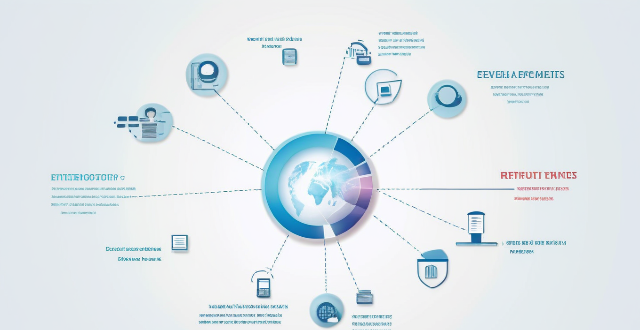
How does network slicing work in 5G technology ?
Network slicing is a feature of 5G technology that allows operators to create multiple virtual networks on a shared physical infrastructure. This enables them to offer customized services with specific quality of service (QoS) and quality of experience (QoE) requirements for different types of customers and applications. The implementation of network slicing involves several key components such as Network Function Virtualization (NFV), Software-Defined Networking (SDN), Network Management and Orchestration (MANO), and Policy Management. The steps involved in implementing network slicing include requirement analysis, resource allocation, virtual network function deployment, resource management, policy enforcement, monitoring and optimization, and lifecycle management. Network slicing offers benefits such as customization, resource efficiency, scalability, improved performance, and enhanced security.

What strategies can I use to encourage more comments and questions during my live streams ?
Engaging your audience during live streams is crucial to building a loyal community and enhancing the overall experience. Here are some strategies you can use to encourage more comments and questions: 1. Ask for Interaction: Directly invite comments and create a culture of participation. 2. Engage with Your Audience: Respond to comments and use viewers' names. 3. Create Interactive Content: Dedicate portions of your stream for Q&A and use polls or surveys. 4. Host Giveaways and Contests: Organize giveaways where entries are based on commenting or sharing thoughts in the chat, and host contests where viewers need to engage by leaving comments or asking questions to participate. 5. Segment Your Content: Structure your stream with short breaks dedicated to reading and responding to comments, and have specific days where you focus on viewer interactions. 6. Leverage Social Media: Encourage viewers to continue discussions on other social media platforms and share interesting comments or questions from your live streams on social media to encourage more interaction during the next session. 7. Offer Exclusive Content or Perks: Offer exclusive content, merchandise, or perks to viewers who regularly engage with comments or questions, and consider creating a membership program where engaging members receive special benefits. 8. Make It Fun: Include games or challenges in your stream that require audience participation through comments or chat commands, and incorporate viewer comments into your narrative or include them as characters in a story you're telling.
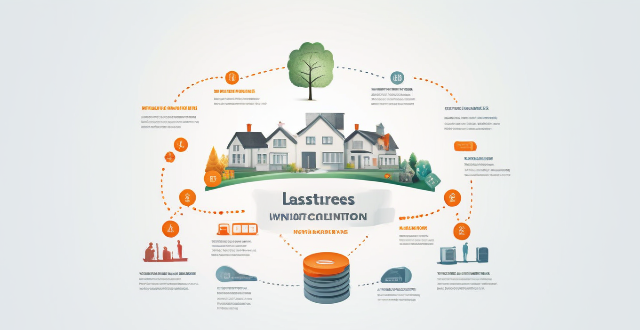
What are the latest wireless communication standards ?
This article discusses the latest wireless communication standards, including 5G, Wi-Fi 6, Bluetooth 5.2, and LoRaWAN. It highlights their key features, such as enhanced mobile broadband for 5G, OFDMA and MU-MIMO for Wi-Fi 6, LE Audio and direction finding for Bluetooth 5.2, and long range and low power consumption for LoRaWAN. The article also mentions potential use cases for each standard, such as smart cities and autonomous vehicles for 5G, home networks and public Wi-Fi hotspots for Wi-Fi 6, personal audio devices and wearable technology for Bluetooth 5.2, and smart agriculture and environmental monitoring for LoRaWAN.

Is there potential for AI to revolutionize sports journalism and broadcasting ?
Artificial Intelligence (AI) has the potential to revolutionize sports journalism and broadcasting by automating content generation, enhancing data analysis and visualization capabilities, delivering personalized content, generating automated commentary, creating immersive VR experiences, and customizing broadcasts based on viewer preferences. AI can save time for journalists, allowing them to focus on more complex tasks such as investigative reporting or in-depth analysis. It can also uncover insights and trends from raw data and present them in visually appealing formats. Personalized content delivery can recommend articles, videos, and other content that align with individual interests. In sports broadcasting, AI can generate play-by-play commentary based on live data feeds, describe each play as it happens, and provide insightful color commentary that adds depth to the viewer's understanding of the game. Virtual reality technology can create immersive experiences that allow viewers to feel like they are part of the action. Finally, AI can customize broadcasts based on viewer preferences by analyzing user data such as viewing history and social media activity. As AI technology continues to evolve and improve, we can expect even more innovative applications in these fields that will further enhance the fan experience and change the way we consume sports content forever.

How can I use polls or quizzes to boost interactivity in my live streams ?
Interactivity is key to keeping your audience engaged during live streams. One effective way to achieve this is by incorporating polls and quizzes into your content. Here's how you can use them to enhance the viewer experience: ### **Polls** #### **Create Engaging Questions** - Start by crafting poll questions that are relevant to your content and encourage viewers to participate. - Make sure the questions are clear and easy to understand. #### **Use Poll Results to Guide Your Content** - Use the results of your polls to steer the direction of your live stream. This makes viewers feel like they have a say in what happens next. - Address the poll results and discuss why certain choices were more popular than others. #### **Time Your Polls Appropriately** - Introduce polls at moments when you want to re-engage your audience or when the content allows for a natural break. - Avoid placing polls too close together, as this can disrupt the flow of your stream. ### **Quizzes** #### **Design Fun and Challenging Quizzes** - Create quizzes that are both fun and challenging for your audience. This could be related to your content or general knowledge topics. - Offer rewards or recognition for viewers who answer correctly, such as shout-outs or exclusive content. #### **Incorporate Multimedia Elements** - Use images, videos, or sounds within your quizzes to make them more engaging and interactive. - This can also help to break up longer segments of talking and keep viewers interested. #### **Encourage Participation** - Ask viewers to comment their answers or use a polling tool that allows for real-time results. - Engage with the audience by responding to comments and discussing the correct answers after the quiz. ### **General Tips for Polls and Quizzes** #### **Keep It Simple** - Don't overcomplicate your polls or quizzes. Keep them straightforward so that all viewers can participate easily. #### **Vary Your Formats** - Mix up the types of polls and quizzes you use to prevent repetitiveness and maintain interest. #### **Analyze Responses** - Pay attention to the responses you receive from polls and quizzes. They can provide valuable insights into what your audience likes and dislikes. #### **Promote Interaction** - Encourage viewers to share their opinions and interact with each other through the comments section while participating in polls and quizzes.

What are the best practices for engaging with viewers during a live stream ?
The text provides a comprehensive guide for live streamers to engage with their audience. It outlines 10 best practices, including welcoming viewers, acknowledging newcomers, asking open-ended questions, responding to comments, using viewer's names, creating polls or Q&A sessions, sharing personal stories, showing appreciation, maintaining a positive atmosphere, and ending with a call to action. Each practice is accompanied by sample dialogue that demonstrates how to implement the suggestion during a live stream. The guide emphasizes the importance of building a connection with viewers, creating an interactive experience, and fostering a welcoming environment.

What techniques are used in filmmaking to make slow-paced sports like golf or chess more exciting for viewers ?
Slow-paced sports like golf or chess can be challenging to make exciting for viewers. However, filmmakers use various techniques to enhance the viewing experience and keep audiences engaged. Here are some of the most common techniques used: 1. Close-Up Shots 2. Drama Between Players 3. Commentary and Analysis 4. Music and Sound Effects 5. Visual Effects and Graphics 6. Storytelling 7. Multiple Camera Angles 8. Replays and Highlights 9. Interactive Elements 10. Narration
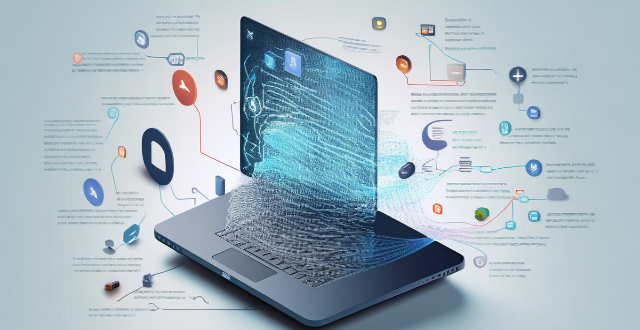
What is the latest advancement in mobile communication technology ?
The latest advancement in mobile communication technology is the **5G network**, promising faster speeds, lower latency, and more reliable connections. Key features include increased speed, reduced latency, improved reliability, enhanced coverage, and network slicing. Benefits of 5G technology include faster download and upload speeds, better video call quality, improved IoT connectivity, enhanced gaming experience, and autonomous vehicles.
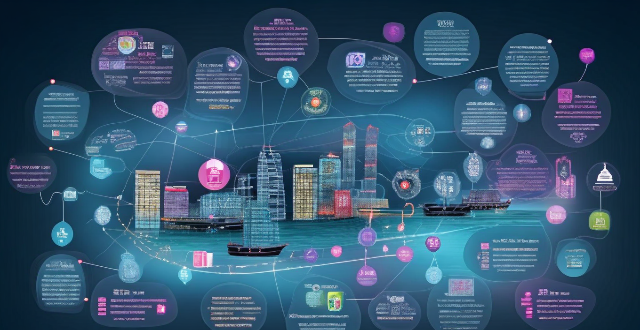
What role does audience feedback play in shaping future live streaming sessions ?
The article explores the crucial role of audience feedback in shaping future live streaming sessions. It discusses the importance of feedback in improving content relevance, enhancing interactivity, technical optimization, and building a community. The article also suggests strategies for implementing feedback collection, such as surveys, live chat analysis, social media engagement, and email subscriptions. Additionally, it emphasizes the need for data-driven decisions, transparency with changes, and an iterative approach to continuously improve live streaming sessions.